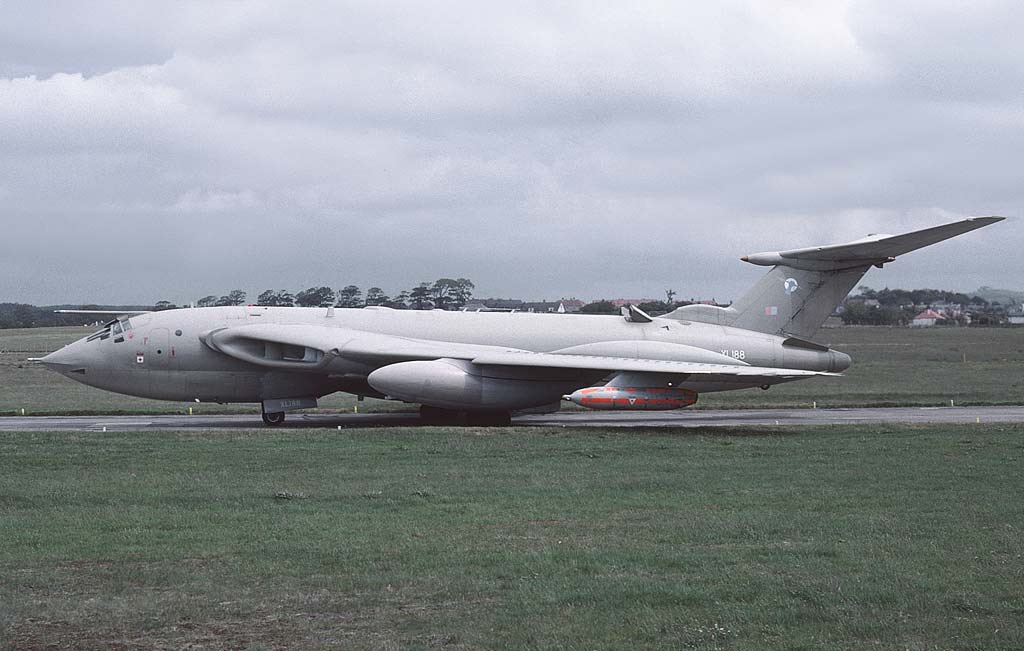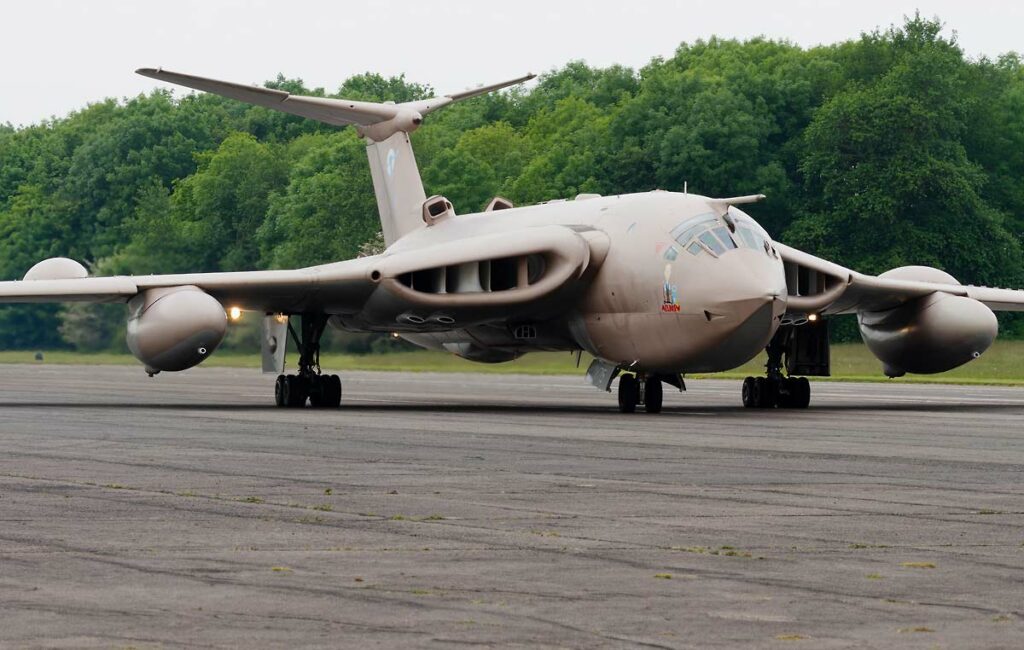The Handley Page Victor was a British V-bomber, strategic bomber turned tanker, known for its crescent wing and operational versatility.
Technical Summary
The Handley Page Victor was a key component of Britain’s Cold War strategic nuclear deterrent, serving as one of the three V-bombers in the Royal Air Force’s (RAF) inventory. First flown in 1952, it featured a distinctive crescent wing design that allowed for high-speed, high-altitude flight, enhancing its survivability in the face of Soviet air defenses. Powered by four Rolls-Royce Conway turbofan engines, the Victor had a maximum speed of over Mach 0.9, a range of approximately 6,000 miles (9,656 kilometers), and could reach altitudes of up to 56,000 feet (17,069 meters). Initially designed as a strategic bomber, it was later adapted for aerial refueling roles, significantly extending the operational range of RAF and allied aircraft. Despite its transition from a nuclear deterrent to a support role, the Victor remained a symbol of British engineering prowess and Cold War military strategy.
The Handley Page Victor stands as a testament to the technological innovation and strategic vision that defined the Cold War era. As part of the United Kingdom’s V-bomber force, it played a crucial role in deterring nuclear aggression and maintaining a balance of power during a period of global tension.

History of the Development of the Handley Page Victor
In the aftermath of World War II, the onset of the Cold War prompted the United Kingdom to reassess its defense strategy, particularly in the realm of nuclear deterrence. The RAF issued a requirement for a new class of bombers capable of delivering nuclear weapons deep into Soviet territory, leading to the development of the V-bombers: the Vickers Valiant, the Avro Vulcan, and the Handley Page Victor.
The Victor program was launched by Handley Page in response to this requirement, with the aim of creating a high-speed, high-altitude bomber that could evade Soviet air defenses. Its innovative crescent wing design, developed under the guidance of aerodynamicist Dr. Gustav Lachmann, was pivotal in achieving the desired performance characteristics. The first prototype took to the skies on December 24, 1952, marking a significant milestone in British aviation history.
Although the Victor did not receive a specific NATO nickname, its introduction into service in 1958 solidified Britain’s strategic nuclear capabilities during a critical period of the Cold War.
Design of the Handley Page Victor
The Handley Page Victor’s design was characterized by several innovative features, most notably its crescent-shaped wings. This unique wing profile minimized wave drag at high speeds, allowing the aircraft to operate efficiently at both subsonic and transonic speeds. The aircraft measured approximately 114 feet 11 inches (35 meters) in length, with a wingspan of 120 feet (36.6 meters) and a height of 28 feet 2 inches (8.59 meters).
The Victor’s airframe incorporated a fully pressurized fuselage, enabling it to fly at high altitudes, while its four Rolls-Royce Conway turbofan engines provided the thrust required for long-range missions. The bomber variant was equipped with a state-of-the-art electronic countermeasures (ECM) suite and could carry a variety of nuclear and conventional ordnance.
One of the design drawbacks was its complexity, which posed maintenance challenges. However, the Victor’s advanced design and versatility in both bombing and aerial refueling roles underscored its significant contribution to British aerospace engineering.
Performance of the Handley Page Victor
In terms of performance, the Handley Page Victor was capable of reaching speeds in excess of Mach 0.9 (around 690 mph or 1,110 km/h) and had a service ceiling of 56,000 feet (17,069 meters). Its operational range was about 6,000 miles (9,656 kilometers) without aerial refueling, a testament to its strategic reach.
Compared to its V-bomber counterparts, the Vulcan and Valiant, the Victor offered a blend of speed, altitude, and range that was competitive for its time. Its performance in the aerial refueling role further extended the operational capabilities of the RAF and allied air forces, demonstrating its adaptability and enduring value.
Variants of the Handley Page Victor
The Victor was produced in several variants, with the most notable being the B.1 and B.2 bomber versions, and the K.1, K.1A, K.2, and K.2A tanker versions. The B.2 featured more powerful engines and an improved ECM suite, while the tanker variants were modified with refueling pods under the wings and additional fuel storage, providing critical support for air operations worldwide.

Military Use and Combat of the Handley Page Victor
Though initially designed as a strategic bomber, the Victor’s most notable contributions came in its later life as an aerial refueling tanker. It supported operations in conflicts such as the Falklands War in 1982, where Victors conducted the Black Buck raids, some of the longest-ranged bombing missions in history. Additionally, Victors played a vital role in refueling aircraft during the Gulf War in 1991, demonstrating their strategic importance beyond the Cold War.
The Victor was eventually retired from service in 1993, replaced by more modern aircraft capable of fulfilling both strategic bombing and aerial refueling roles. Despite its retirement, the Victor’s legacy as a key component of Britain’s Cold War defense strategy and its adaptation to changing military needs underscore its historical significance.
The Handley Page Victor exemplifies the innovation and strategic foresight of British aerospace design during the Cold War. From its inception as a high-speed, high-altitude bomber to its extended service as a vital aerial refueling tanker, the Victor demonstrated remarkable versatility and operational capability. Its development, service, and legacy reflect the complexities of Cold War deterrence and the enduring importance of aerial refueling in modern military operations.
Back to Transport planes.